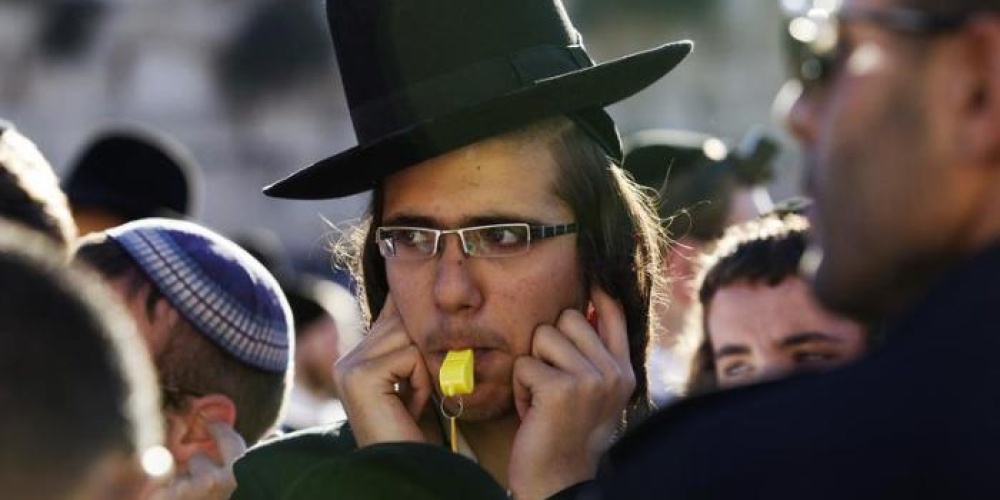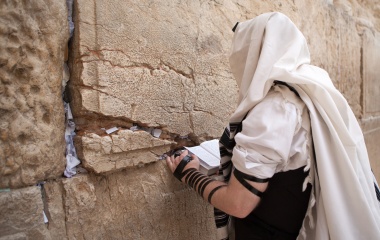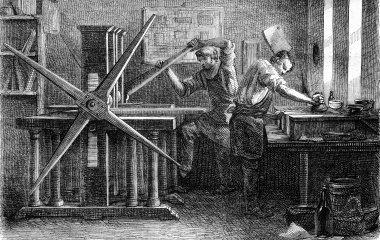
Torah reading as we know it today is a rabbinic innovation, beginning with Moshe Rabbeinu who--in his rabbinic role (as opposed to his role as transmitter of the Divine Torah)--ordained that we must read the Torah on Shabbat, Mondays, and Thursdays. Ezra--who, the Talmud declares, was worthy to have the Torah given through him, but Moshe beat him to it (Sanhedrin 21b)--added the requirement to read it on Shabbat afternoons, and added the system of aliyot we have today (Bava Kama 82a). I shudder to think of the ignorance that would be rampant of our most basic text if not for this transformative rabbinic initiative.
The only time one was required to publicly read the Torah as abiblical requirement was as part of Hakhel, the once-in-seven years' gathering of all Jews in Jerusalem, where the King would read excerpts from the Torah (Devarim 31:10-13).
While not biblically mandated, after finishing with the major part of the Yom Kippur avodah, the kohen gadol would read from Parshat Acharei-Mot, which describes the Yom Kippur service he had just performed[1] (Mishna Yoma 68b). He would then read the section from Parshat Emor describing the obligation to fast on Yom Kippur. At this point, he would roll up the sefer Torah and declare, "More than what I read is written here". He would then read, off by heart, the maftir portion detailing the mussaf sacrifices of Yom Kippur, which appear in Parshat Pinchas, in seeming violation of the law "that which is written, you are not permitted to say by heart" (Gittin 60b).
The Gemara explains that "one does not roll a sefer Torah in public because of kavod hatzibbur, the dignity of the congregation[2]" (Yoma 70a). To do so would be a needless waste of time. What amazing respect our rabbis had for the congregation of Israel. How long does it take to roll a sefer Torah from Parshat Emor to Parshat Pinchas? 90 seconds? Perhaps--if you roll very slowly! Yet such displays a lack of respect for the congregation. Better to read by heart than waste the time of others.
We find a similar notion regarding tekiat shofar on Rosh Hashanah. There is long-standing debate on the exact nature of the teruah. Does it mean what we today call teruah, or is it ashevarim, or possibly a shevarim-teruah? Thus developed the custom to blow shofar using all three possibilities: tekia,shevarim-teruah, tekia (tashrat); tekia, shevarim, tekia (tashat) and tekia, teruah, tekia (tarat) (Rosh Hashanna 33b-34a).
In the great Yeshivot of Babylonia they would--during the repetition of the mussaf amidah--take turns, blowing tashratafter the blessing of malchiot, tashat after zichronot, and taratafter shofarot. As to why they did not just blow tashrat, tashatand tarat after each bracha as we do today, thereby removing all doubt that the shofar is properly blown after each bracha, the Rif (Rosh Hashanna 11a)--the great 10th century North African halachist and the first to codify Talmudic law--explains that do so would be a burden on the community[3]. This is truly unbelievable. We sit in shul for hours on Rosh Hashanah, but to take a few seconds to add a few sounds of the shofar would be an unnecessary burden on the community. Such is the respect we owe the Jewish people.[4]
[1] While he read this in public--actually, from the women's section of the Temple--there was no obligation for anyone to go hear him. As the Mishnah notes, "one who would see thekohen gadol when he reads would not see the bull and goat as they were burnt...not that they were not permitted, but because they were at a great distance, and they were performed at one (i.e., the same) hour".
[2] Without entering the fray (or did I just do so?) regarding women receiving aliyot, I believe it is worth noting that the reason given for the practice not to allow such is also that ofkavod hatzibur (Megilah 24a). Why some violations of such create such vehement condemnation and others are ignored is something I leave to those wiser than I to determine.
[3] The nature of the relationship between tircha tzibur, a burden on the community, and kavod hatzibur, the dignity of the congregation, is something I have not explored.
[4] Dr. Chaim Soloveitchik, in his classic essay "Rupture and Reconstruction: the Transformation of Orthodoxy", notes that the concept of motzi la'az al harishonim, the prohibition to introduce increased levels of stringency lest it impinge on the piety of earlier generations, is one that is virtually ignored today. It seems to me that much the same may be said about the dignity of, and burden placed on, the congregation.



